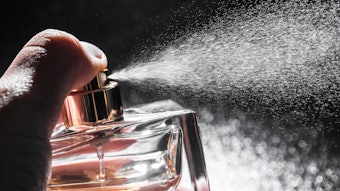- Downward pressure on disposable income could see private label further erode the market shares of branded products in mature markets.
- Innovation in air care has increasingly focused on the desire of consumers to enhance the home environment.
- Alternate fragrances to combat “olfactory fatigue” are proliferating, but their high price points may increase the industry’s vulnerability to an economic downturn.
- A new niche of air hygiene spray, products that blur the distinctions between air care and household antiseptics/disinfectants, may prove to be a boon.
The socioeconomic tailwinds that drove growth in air care in recent years went sharply into reverse during 2008 as credit markets froze and housing values went into free fall in a number of markets. According to Euromonitor International data, the global air care market was worth just under $8 billion during 2008. However, the rate of annual growth in value sales slowed from 4.8% in 2007 to 2.9% during 2008, well below its CAGR of 5.4% during the 2003–08 period.
The role played by the residential housing market in the current economic crisis is of particular importance to the air care industry, as evidenced by the fact that some of the worst-performing air care markets in 2008 were also those with the weakest housing markets.
For example, in the U.S., growth in sales of air care products fell from 2.3% in 2007 to -0.4% during 2008. Since peaking during 2006, the Case-Schiller 20-City Housing Index has lost more than 40% of its value. This decline in housing values has gone hand-in-hand with a surge in housing repossessions, helping to push the rate of home ownership in the U.S. down to 67.5% during the first quarter of 2009, its lowest level since 2000. Meanwhile, in Germany, which has been hit at least as badly by the downturn as the U.S., sales growth in air care was relatively stable between 2007 and 2008, easing from 1.2% to 1.1%. Crucially, Germany avoided a boom-and-bust housing cycle. In Spain and Ireland, two Eurozone economies that are suffering housing busts, the performance of the air care segment deteriorated markedly between 2007 and 2008. In Ireland, the rate of annual growth almost halved, down from 7% to 3.8%, while annual growth collapsed from 10.2% to 1.7% in Spain. This strong correlation is most likely the result of a combination of a negative wealth effect and a reduction in levels of home ownership.
Developing Markets Gain in Importance
Rapid rates of urbanization and economic development, particularly in the BRIC economies (Brazil, Russia, India and China), have helped to support growth in sales of air care products in developing markets. As a result, double-digit rates of value growth in air care were maintained in the Indian (12.2%), Eastern European (15%) and Latin American (10.8%) markets during 2008.
Millions of consumers in these markets have been lifted out of absolute poverty, and these emerging lower middle-class consumers have been the main driver of growth in sales of air care. For example, the proportion of Brazilian households with an annual disposable income of more than $10,000 expanded from 15.7% to 53.9% between 2003 and 2008.
Moreover, Brazil’s urban population grew from 149 million to nearly 165 million between 2003 and 2008, while its rural population declined from nearly 33 million to just more than 29 million. This is important to air care marketers because urban consumers are far more likely to purchase air care products than their rural counterparts. In India, Euromonitor International data shows that, although sales of air care products have been growing strongly in rural areas, urban consumers in this market still accounted for 90.5% of sales during 2008. However, the short-term prospects for growth in developing markets should not be exaggerated. Developing economies have not “decoupled” from their developed counterparts, and it is likely that growth in air care in many of these markets will slow, perhaps significantly, during 2009 as unemployment rises, income growth declines and urbanization slows.
SC Johnson Retains Global Market Leadership
In terms of global market share, SC Johnson & Sons dominance of the air care sector has weakened slightly during recent years, declining from a peak of 32.9% in 2005 to 28.9% during 2008, according to Euromonitor International. Although its Glade/Brise brand remains strong in many emerging markets, it is coming under increasing pressure from indigenous rivals in those markets—notably from Jiangsu Tongda Aerosol in China. In Russia, its market share more than halved (from 42.6% to 19.2%) between 2001 and 2008 as both indigenous challengers (such as Arnest AOA) and multinationals (such as Sara Lee) have built their market presence.
However, the biggest cause of its dip in global market share has been the weak U.S. market, where it has lost sales to Reckitt Benckiser’s Air Wick brand—largely due to SC Johnson’s poor performance in electric air fresheners and candle air fresheners.
Reckitt Benckiser Reaps Rewards of Aggressive NPD Strategy
Reckitt Benckiser has grown its market share from 15.2% to 18.9% between 2001 and 2008. This success has been due in large part to aggressive strategy of new product development. Recent examples include a mini version of its Air Wick Freshmatic Automatic Spray, which features a timer to enable consumers to set the air freshener to release its fragrance at regular intervals, and Air Wick Hidden Pleasures Nite Light Scented Oil. Sara Lee, the third-largest player globally, has struggled to maintain its market share, which stood at 7.5% during 2008. Its main air care brand, Ambi-Pur, is positioned in the mid-priced-to-premium segment, and is thus particularly exposed to the chill winds of a recessionary economic environment. Outside of the top three, Procter & Gamble is rapidly expanding its presence in air care, accounting for 5% of sales during 2008 in a market it only entered in 2004. This was due in part to the successful launches of Febreze Noticeables (2006) and Febreze Candles (2007) in the U.S. market.
Private Label Growing
Private label represents a growing threat to brand manufacturers. Already well-established in Western Europe, where they accounted for 13.5% of sales during 2008, private label has no more than a marginal presence in North America, with a market share of slightly more than 2% in 2008. However, downward pressure on disposable income could see private label further erode the market shares of branded products in these mature markets.
In China, Carrefour has launched private label spray/aerosol air fresheners, which could force price reductions for branded products. Brand loyalty does not play an important role in air care markets such as China, where consumers make their purchasing decision regarding air care products on an impulse basis—increasing the threat posed by private labels.
Decorative Fragrances Help Drive Value Growth
In recent years, innovation in air care has increasingly focused on the desire of consumers to enhance the home environment, rather than simply mask bad smells. As a result, new air care launches have tended toward decoration and away from function. This has also led to a high level of technological innovation. Products that alternate fragrances to combat “olfactory fatigue” (when the nose can no longer smell one fragrance), such as Procter & Gamble’s Febreze Mist & Refresh and Febreze Plug & Refresh, are proliferating. These products tend to have high price points, boosting value growth but perhaps also increasing the industry’s vulnerability to an economic downturn.
Emergence of Air Hygiene Niche Could Be Timely
Kobayashi’s Bacterito has been one of the most innovative launches in the air care space in recent years. Launched in Japan during 2007, Bacterito is a spray that produces negatively electrified mist to destroy household germs, and also contains deodorizing agents. It has blurred the distinctions between air care and household antiseptics/disinfectants to create a new niche of air hygiene sprays. Health threats, as exemplified by the spring 2009 swine flu scare, could significantly boost demand for such products.
Poor Ecological Credentials Remain Achilles Heel
Growing environmental awareness on the part of consumers also presents a significant challenge to the industry, as air care has not traditionally been an ecologically friendly category. The industry’s ongoing reliance on non-renewable ingredients and synthetic perfumes are both, if not diametrical, sore points with a segment of consumers, and there is an emerging niche of environmentally friendly products to take advantage of changing demands. Ecover, for example, introduced a new range of room fragrances based on plant extracts and essential oils in 2007. However, the scope for environmental trends is limited in air care as environmentally aware consumers tend to prefer natural smells and are unlikely to use many air care products.
Carrie Lennard is a research analyst at Euromonitor International.










